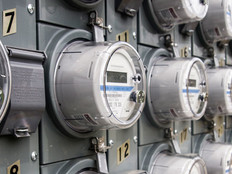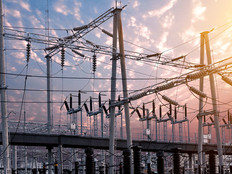Utilities Will Invest Heavily in Data Analytics in the Years Ahead
For utility companies looking to deliver energy efficiently for decades to come, smart meters were just the beginning.
In the years ahead, utilities are going to invest billions of dollars into more advanced analytics platforms that will leverage data from their own devices and Internet of Things devices of their customers, according to a recent report from GTM Research, a division of Greentech Media.
As Greentech Media notes, utilities have used data analytics primarily by deploying advanced metering infrastructure (AMI) and utility-owned grid hardware, such as smart meters. However, in the years ahead, utilities will enhance their analytics capabilities to gain advantages over competitors and achieve cost savings. They will do so in part by investing in analytics technologies that use data captured at the edge of the power grid where customers live and use electric devices.
Several IT and operational technologies will help drive enhancements of customer analytics, according to the report, including Platform as a Service cloud offerings, back-office IT systems and IoT devices. Those IoT devices will increasingly be customers’ own smart home appliances.
The GTM Research report estimates that North American utilities spent $4 billion in 2017 across three market segments: AMI, utility back-office IT systems and grid-edge customer analytics. Through 2021, North American utilities will spend an additional $16 billion in those areas, according to the report.
SIGN UP: Get more news from the BizTech newsletter in your inbox every two weeks!
What is the Grid Edge for Utilities?
To understand grid-edge analytics, one has to unpack the term “grid edge.” It’s a term Greentech Media has popularized. The Alliance to Save Energy notes that a grid edge is somewhat analogous to the idea of a network edge.
The grid edge is, essentially, the “hardware, software and business innovations that are increasingly enabling smart, connected infrastructure to be installed at or near the ‘edge’ of the electric power grid,” the ASE notes. The edge, the organization notes, “means the proximity to end-use customers (at their homes, businesses or at distribution systems very close to both) rather than at power plants or along transmission lines.”
The Potential of Analytics Technologies for Utilities
When utilities started deploying analytics solutions, they did so largely on an ad hoc basis as they searched for ways to use data to create business value and efficiencies. Timotej Gavrilovic, the author of the GTM Research report, tells Greentech Media that utilities then will turn to technology vendors to manage and integrate their evolving analytics tools or create customized ones.
According to the report, for utilities, data analytics has evolved from limited and siloed data that helps businesses understand their operations to Big Data analytics that can be visualized and help improve performance. Moving forward, analytics will incorporate data from IoT devices, will involve data lakes, use machine learning techniques and will enable real-time optimization of the grid.
“Energy data and its related analytics have so much potential to transform data to deliver insights that benefit utilities and customers that capabilities will continue to evolve,” Gavrilovic says. “Partnerships will be critical to growing these capabilities, but so will customer participation. But at the same time, increased customer engagement in programs will create new layers of data complexity.”
Tanuj Deora, chief content officer of the Smart Electric Power Alliance, a nonprofit that helps utilities deploy clean energy and distributed energy resources, tells Greentech Media that in 2017 battery storage became more economically compelling and that there were “hints of the value of grid-edge data analytics, and a new debate on defining grid resilience.”
“Channeled through the concept of ‘grid modernization,’ these developments may offer utilities a significant investment strategy for environmental and financial sustainability, while also driving program innovation,” Deora says.
“If utilities can leverage these transformational elements with an emerging responsiveness to customers — particularly commercial and industrial customers — 2018 may be the year power-sector uncertainty turns to clarity and confidence,” Deora adds.








